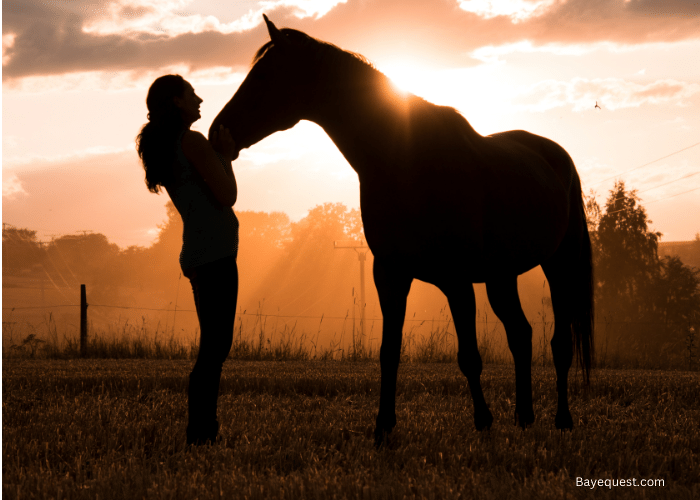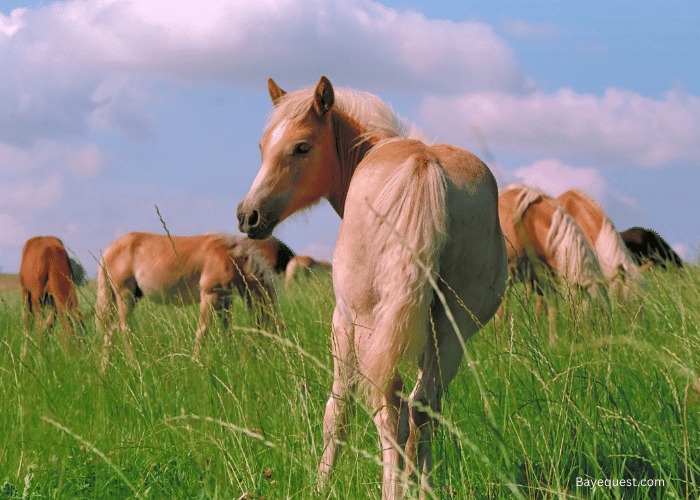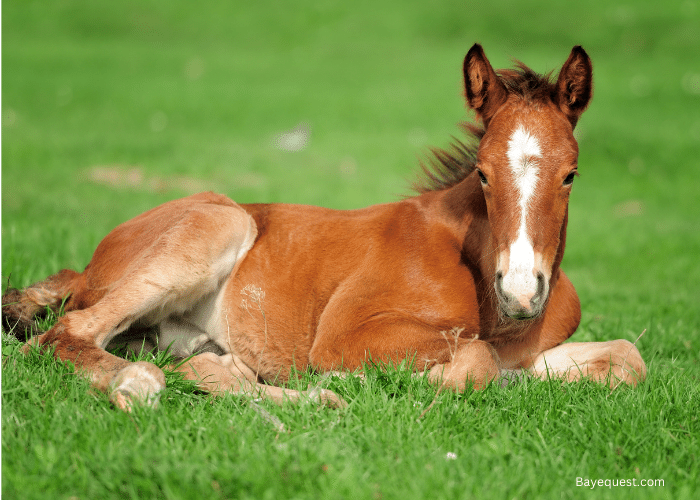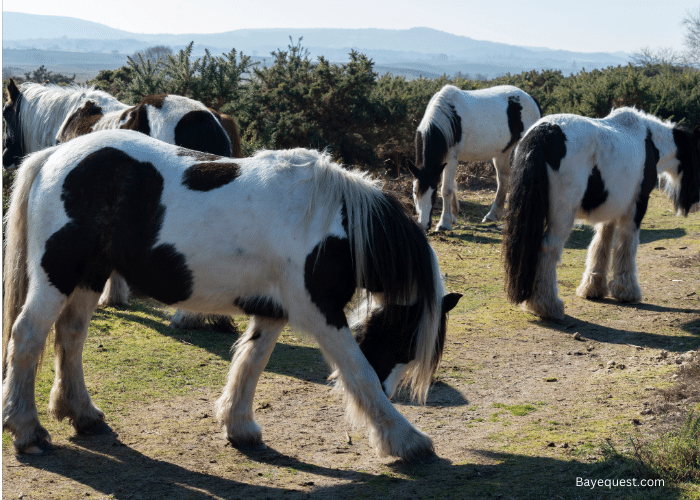It seems mud is inevitable; here it is again. There’s an old ranchers’ saying; “You have to have mud in the corrals if you want to have grass in the pastures”. True, but it would be nice to have as little of it as possible. Besides being miserable to get around in, it can lead to thrush, scratches, lost shoes, and even injuries to tendons and ligaments if very deep or slippery.
What is it exactly? Dirt, water, and a way to stir it up. If we mix the ingredients in a bowl, it’s easy to recreate it exactly. Add in some manure, urine, shavings, and hay and it’s perfect barn mud. So how to minimize it?
Take away one or more of the ingredients. The first and most important to be rid of is water. How? Drainage. How? When building pens or improving a highly impacted area, it’s vital to divert the run-off from the area. This can be done with ditches, drains, or some combination. Improvement can often be made with some work with equipment, or even a shovel, to change the way the water is running during heavy rains. A ditch witch can be rented at a local equipment rental place for a fairly nominal cost. Gravel (drain rock) and perforated pipe go into the ditch, and voila! Less water. The top of the pipe should be at least a foot under the surface of the pen. Raising, and crowning or sloping a pen or areas around gates and water troughs helps, too. This can be done with the addition of drain rock with road base or blue shale over it. Talk to your local quarry about the products available in your area.
Maintenance of highly-impacted areas makes a big difference. It would be nice to do it once and be done with it, but unfortunately, it doesn’t work. With all the forces of water and horse hooves mixing up the surface, holes need to be filled and material added periodically. It’s helpful to have a backup supply of gravel available for quick access with the tractor bucket or wheelbarrow. “A stitch in time…”
Using shavings outside just doesn’t work. They are too absorbent and end up making worse mud in the long run. Bark or wood chips can be used if desired. When selecting wood chips it is important to avoid black walnut and any mixture that contains sharp pieces. Many types can be seen at your local landscape materials seller. Cedarest is a product designed to be used outside; their ads can be seen in many horse magazines.
A big factor in making mud more or less stinky and miserable is how much organic material it contains. Imagine sand mixed with water – drains well and packs hard. There is no organic matter in it. Sand does make a good corral footing, if one is very careful not to feed on it. That can be hard to do. It’s doable if the horse is fed in a stall, and the adjacent pen is separated by a curb of some sort from the stall. Some horses will pick around in the sand quite a bit. Feeding psyllium may very well help, but it’s still risky.
A clay soil with sand and gravel is the best base. If manure is picked up regularly and the drainage is good, it will not get terribly muddy. Filling in holes that occur from peeing or pawing will help, too. Keeping hay, manure and shavings out of the dirt keeps the dirt from being as absorbent.
So we’ve minimized water and organic matter… what else? The stirring action of hooves. That can be done by making highly-impacted surfaces as hard as possible with the addition of gravel, sand, bark, or a combination based on local availability and your preferences. If the hooves can’t punch down into the surface, much less “stirring” will occur. In pastures, water and organic matter are a given, and the only way to minimize mud is to minimize stirring. This can be accomplished by limiting turn-out time, rotating pastures, reducing numbers of horses on an area, and even exercising horses before they are turned out. All these procedures will cut down on the horses’ impact on your pastures.
There is no perfect recipe for mud management. Each facility and area is different. Material availability and cost varies in different areas, and so do soils. If you keep in mind the three ingredients of mud; dirt, water, and stirring, and work to minimize each element, you’ll be able to find what works best for your unique situation.








